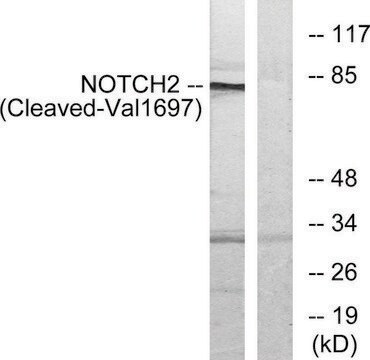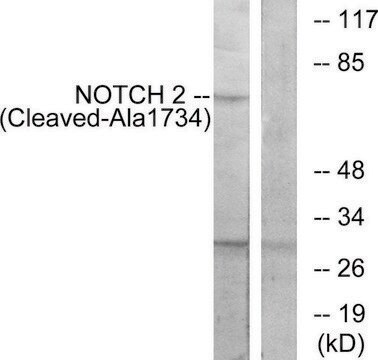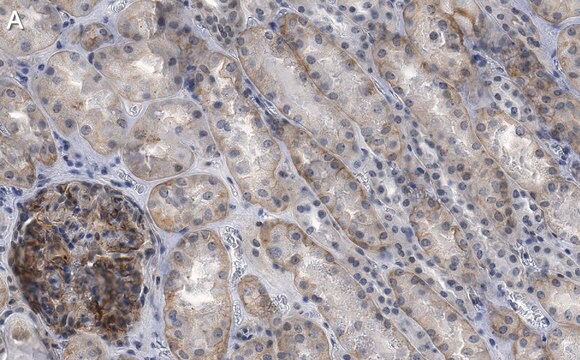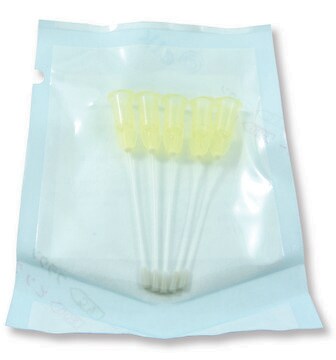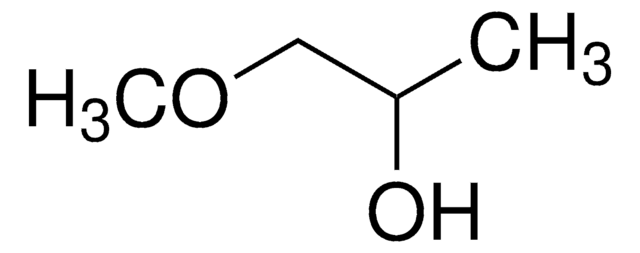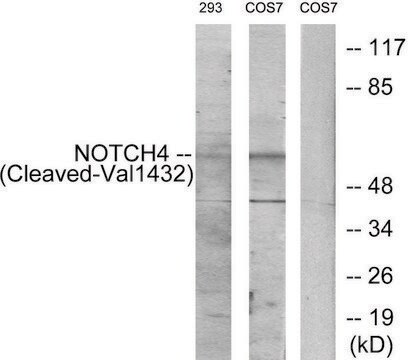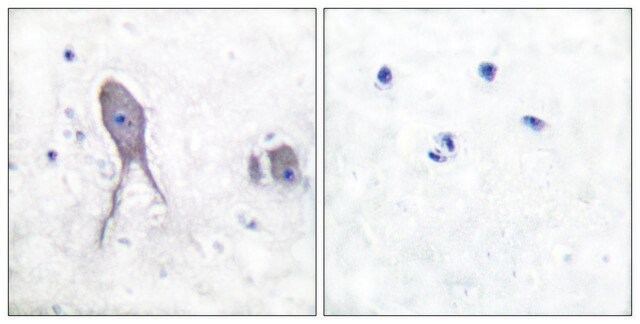07-1234
Anti-Notch 2 Antibody, NT
serum, from rabbit
Sinónimos:
Neurogenic locus notch homolog protein 2 precursor, Notch (Drosophila) homolog, Notch 2, Notch homolog 2 (Drosophila)
About This Item
Productos recomendados
biological source
rabbit
Quality Level
antibody form
serum
antibody product type
primary antibodies
clone
polyclonal
species reactivity
mouse, human
species reactivity (predicted by homology)
rat (14/15 immuongen sequence homology)
technique(s)
ELISA: suitable
immunohistochemistry: suitable (paraffin)
western blot: suitable
isotype
IgG
NCBI accession no.
UniProt accession no.
shipped in
wet ice
Gene Information
human ... NOTCH2(4853)
General description
Specificity
Immunogen
Application
1:30,000-1:90,000 dilution from a previous lot was used in a standard sandwich ELISA assay against the peptide immunogen.
Optimal working dilutions must be determined by the end user.
Immunohistochemistry(paraffin):
Representative testing from a previous lot.
Optimal Staining of NOTCH-2 Polyclonal Antibody: Squamous Cell Carcinoma
Epigenetics & Nuclear Function
Transcription Factors
Quality
Western Blot Analysis: 1:500 dilution of this lot detected cleaved NOTCH2 on 10 μg of NIH/3T3 lysates.
Target description
Linkage
Physical form
Storage and Stability
Handling Recommendations: Upon first thaw, and prior to removing the cap, centrifuge the vial and gently mix the solution. Aliquot into microcentrifuge tubes and store at -20°C. Avoid repeated freeze/thaw cycles, which may damage IgG and affect product performance.
Analysis Note
NIH/3T3 Cell Lysate
Disclaimer
¿No encuentra el producto adecuado?
Pruebe nuestro Herramienta de selección de productos.
Optional
Storage Class
12 - Non Combustible Liquids
wgk_germany
WGK 2
flash_point_f
Not applicable
flash_point_c
Not applicable
Certificados de análisis (COA)
Busque Certificados de análisis (COA) introduciendo el número de lote del producto. Los números de lote se encuentran en la etiqueta del producto después de las palabras «Lot» o «Batch»
¿Ya tiene este producto?
Encuentre la documentación para los productos que ha comprado recientemente en la Biblioteca de documentos.
Nuestro equipo de científicos tiene experiencia en todas las áreas de investigación: Ciencias de la vida, Ciencia de los materiales, Síntesis química, Cromatografía, Analítica y muchas otras.
Póngase en contacto con el Servicio técnico